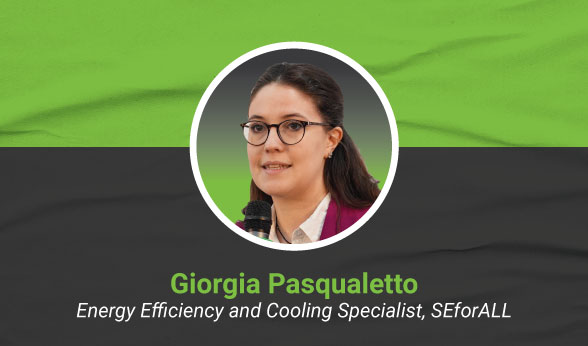

In the quest for a sustainable future, energy efficiency has emerged as the foremost driver of change. However, despite its recognition as the “first fuel,” significant untapped opportunities for energy efficiency remain across all sectors. While the discourse on energy transition predominantly revolves around decarbonizing the electricity supply sector with renewable energy technologies, there is a pressing need to shift our attention to energy demand sectors. To unlock their potential for decarbonizing the global economy, we must reimagine individual and community actions that shape energy consumption.
Historically, energy efficiency communications have relied heavily on logic and technical details, often failing to inspire decision-makers at various levels. Recognizing this gap, SEforAll, AEEE, TERI and ITDP-India joined hands and brought together, the Energy Efficient LiFE Charrette, on 11 May 2023 at New Delhi. The Charrette embarked on a collaborative effort to develop fresh, people-cantered approaches to communication for action towards energy efficiency. The goal was to empower decision-making at both the individual and collective levels. Central to this effort was the recognition of the power of personal stories and experiences. These narratives have a greater likelihood of convincing people, building trust, and establishing credibility.
India has demonstrated significant progress in energy efficiency, and the launch of the LiFE campaign further solidifies the country’s commitment to promoting sustainable practices domestically and internationally. Communications and Marketing Experts recurrently highlight the importance of behaviour patterns, conscious consumer choices, and crafting compelling messages that centre around people and their experiences. Effective communication acts as a catalyst for collaboration and collective action, bridging information gaps and building trust. By understanding the aspirations and needs of our audience, we can promote energy efficiency effectively. Reframing energy efficiency as a means to access more energy services fosters an abundance mindset, shifting the focus from “saving to survive” to “acting to thrive.”
Simplicity, personalization, and tangible benefits are key elements of successful communication. Messages that connect with people on an emotional level are more likely to resonate. Different emotions resonate with specific audiences, with optimism and pride proving effective for businesses and policymakers, and unity and satisfaction resonating with individuals. Democratizing messages and making individuals feel part of the solution are essential elements in creating an energy efficiency movement.
Leveraging technology can enhance communication and interaction. Disseminating messages effectively and enabling two-way communication can maximize engagement and promote energy-efficient behaviours.
The insights and key messages from the Communications and Marketing Experts that gathered at the Charrette also contributed to the G20 International Seminar on Accelerating Energy Efficiency Progress and Promoting LiFE, held on May 17 in Mumbai, India, during the third meeting of the G20 Energy Transition Working Group.
Looking ahead, partners will continue their collaborative efforts, including through the Mission Efficiency coalition. Together, they aim to curate new narratives for energy efficiency that prioritize personal stories, emotions, and experiences. By driving greater action and fostering collaboration, they aspire to create a sustainable and energy-efficient future for India.
To learn more about Mission Efficiency: www.missionefficiency.org